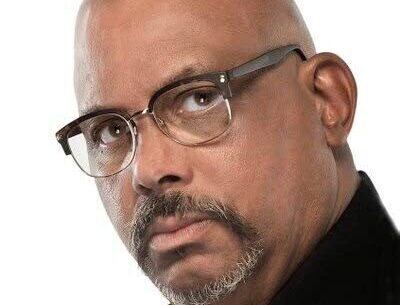State of Trinidad and Tobago newsrooms

BitDepth#1451
Mark Lyndersay
FOR HER doctoral thesis at City University of London, Aurora Herrera chose an intriguing subject – a study of journalism culture in Trinidad through an ethnographic study of six newsrooms in Trinidad.
Ninety-three interviews were conducted with journalists working in newsrooms at CNC 3, the Trinidad Express, Trinidad Guardian, TT Newsday, CNMG (now TTT again), and TV6, most of the conversations conducted with working journalists at varying stages of their careers.
Herrera also spent two weeks in most newsrooms observing as well as conducting interviews, and to their credit most editors allowed a commendable level of transparency into their operations and procedures.
Herrera is an experienced journalist, first experiencing the news-gathering life alongside her mother, Heather-Dawn Herrera, who has written about conservation issues for the Guardian and Express, then beginning her career as a youth columnist.
Herrera acknowledges the bligh given to her because of this early exposure to newsrooms. But despite that early initiation, some of what Herrera found seemed to surprise and even shock her. From her thesis preamble, this was the scope of her investigation.
What are the commonalities between Trinidadian/Tobagonian journalists who come from different newsrooms, religions, ethnicities, and educational backgrounds?
Do these elements play a part in determining the execution of their roles? How has colonization, media ownership in the Caribbean, as well as the media influence of the US impacted on the journalism culture of TT?
Herrera considers the primary influences on the development of the modern TT newsroom. First exploring the recent history of journalism in this country, particularly since independence, which migrated media ownership from colonial interests to corporate investment or state control.
Then she considers the primary motivators and demotivators shaping newsroom focus, drilling down to considerations of money and law. She correctly notes that media ownership can exert a distorting influence on reporting patterns and story acceptability, with conglomerates potentially guiding story choices based on their effect on revenue.
The other major influence, the chilling effect of laws that have the potential to criminalize legitimate news and investigative reporting.
These laws are a mix of legacy legislation, new laws, and laws which remain partially proclaimed, including the Data Protection Act, Cybercrime Bill, 2017, the Libel and Defamation Act, 2014, the Interception of Communication Act, the Sedition Act, and the Proceeds of Crime Act.
In one compelling interview (interview subjects are anonymized), the chilling effect on effective journalism was summarized by one journalist this way, “When you’re just reporting every-day stuff like a transcriptionist, the only way that you could fall short is you may defame by omission when you don’t get a response.”
This dismissal of the day-to-day practice of journalism as a kind of glorified stenography is not as rare as might be hoped.
In her thesis, Herrera notes, “In a developing country like Trinidad and Tobago where there are no specifications for tertiary education to be a journalist, many people practicing journalism do not care about these principles.”
She further notes that in her interviews it became clear that, “Journalists were very frustrated with the lack of resources and detailed how their motivation was affected, which resulted in a sub-par product. Editors revealed that they were frustrated with the level of competence of journalists coming into their newsrooms.”
Herrera’s study touches on many threads that pull at the practice of journalism locally: favoritism, sexism, economic censorship, influence peddling, and nuanced bribery.
The scope she covers manages to be both expansive and familiar, but the most compelling consequence is a steady deterioration in the authority and presence of formal journalism in the day-to-day lives of citizens.
One television journalist told Herrera, “We don’t go in-depth. We don’t really do in-depth journalism. We don’t do follow-ups. We don’t do the research before you go to the assignment and that’s why I think we’re lacking. We don’t educate ourselves. You go do your report, come back, you don’t really get a holistic view of the situation.”
That conflict, between an entrenched and accepted way of producing journalism is only likely to come into greater conflict with the crowd-sourced, unfiltered journalism readily available on social media platforms.
Additional pressure can be expected from digitally-enabled news sources that are unencumbered by the start-up costs of traditional media and inhabit a space of verification between formal media houses and social media scuttlebutt. Herrera’s thesis study may be done, but the ground she trod in gathering her information continues to shift and churn.
Mark Lyndersay is the editor of technewstt.com. An expanded version of this column can be found there.


Comments
"State of Trinidad and Tobago newsrooms"